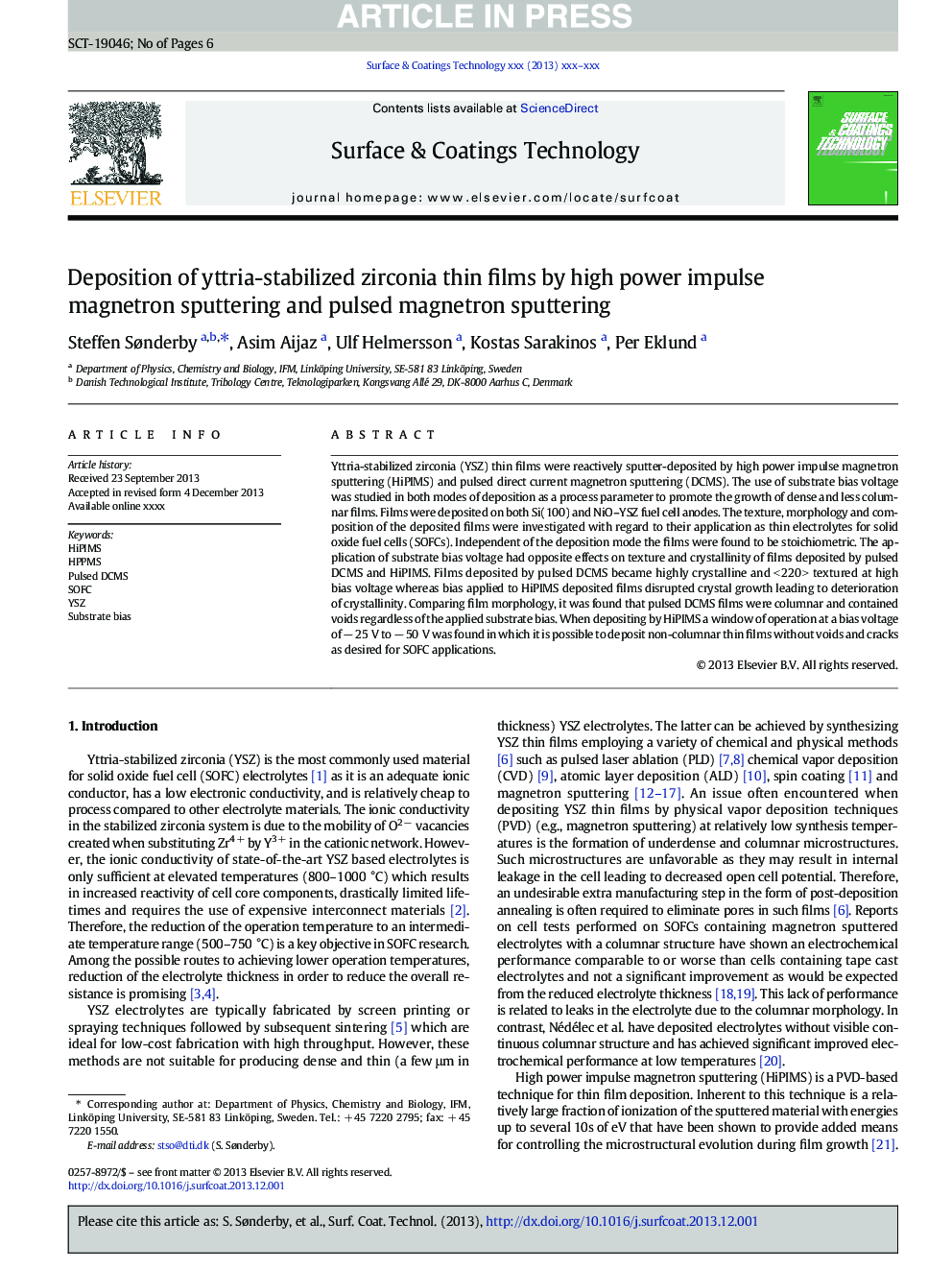| Article ID | Journal | Published Year | Pages | File Type |
|---|---|---|---|---|
| 8028156 | Surface and Coatings Technology | 2014 | 6 Pages |
Abstract
Yttria-stabilized zirconia (YSZ) thin films were reactively sputter-deposited by high power impulse magnetron sputtering (HiPIMS) and pulsed direct current magnetron sputtering (DCMS). The use of substrate bias voltage was studied in both modes of deposition as a process parameter to promote the growth of dense and less columnar films. Films were deposited on both Si(100) and NiO-YSZ fuel cell anodes. The texture, morphology and composition of the deposited films were investigated with regard to their application as thin electrolytes for solid oxide fuel cells (SOFCs). Independent of the deposition mode the films were found to be stoichiometric. The application of substrate bias voltage had opposite effects on texture and crystallinity of films deposited by pulsed DCMS and HiPIMS. Films deposited by pulsed DCMS became highly crystalline and < 220 > textured at high bias voltage whereas bias applied to HiPIMS deposited films disrupted crystal growth leading to deterioration of crystallinity. Comparing film morphology, it was found that pulsed DCMS films were columnar and contained voids regardless of the applied substrate bias. When depositing by HiPIMS a window of operation at a bias voltage of â 25 V to â 50 V was found in which it is possible to deposit non-columnar thin films without voids and cracks as desired for SOFC applications.
Keywords
Related Topics
Physical Sciences and Engineering
Materials Science
Nanotechnology
Authors
Steffen Sønderby, Asim Aijaz, Ulf Helmersson, Kostas Sarakinos, Per Eklund,
